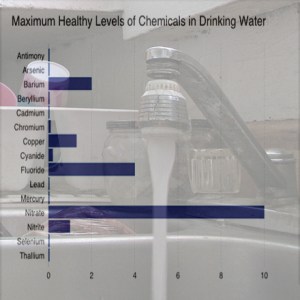Auburn Water District Superintendent Sid Hazelton said his district and the Lewiston Water Department have hired engineers to study what they do to keep lead and other contaminants out of the drinking water supply.
“Any lead people are seeing in their water does not come from the lake. It does not come from the pipes in the street,” Hazelton said. “Any lead that they find is most likely inside people’s plumbing. Usually, it occurs inside the house, wherever plumbers might have sealed joints together with leaded solder. That’s where the lead is coming from.”
Hazelton and Kevin Gagne, Lewiston’s Water Department superintendent, met with representatives from Topsham’s Wright Pierce Engineers on Tuesday to discuss the study.
Gagne said the engineers will review how the utilities handle pipe corrosion issues, looking for acidity and alkaline levels in the water supply. More corrosive water can leach lead or copper into the water supply from the plumbing.
“Really, they are looking at how corrosive our water is and that effect on a customer’s old plumbing,” Gagne said.
All water utilities are required to test 30 homes for lead and copper levels every three years. The acceptable level of lead in household water is 15 parts per billion or less, according to Federal Environmental Protection Agency mandates.
Auburn’s reported lead level in 2012 was 9 parts per billion but had increased to 23 parts per billion in 2015. That increase triggered more vigorous testing; Auburn has to test 60 homes in its system every six months until lead levels drop consistently below 15 parts per billion.
Lewiston is scheduled to test its system in 2017 as part of the three-year requirement.
Hazelton said he’s confident there is no lead in the utility-controlled water supplies in either city, including everything from Lake Auburn to the shut-off box at most addresses.
Hazelton said most privately owned pipes connecting household water service in Lewiston-Auburn to the shut-off boxes are copper, galvanized steel or plastic — not lead.
“It’s extremely rare to hear of lead used for that kind of service pipe,” he said. “I can’t say they didn’t, but it’s not common. We don’t have records of people’s private plumbing, and if someone did put in a lead pipe they would be at risk. But that is not something that is commonly done in Maine.”
Most of Lewiston-Auburn’s lead contamination begins indoors, Hazelton said. Both cities have added phosphate to the drinking water supply that has helped cut down on pipe corrosion since the mid-1990s.
“So we have the engineers looking at each system to see what the makeup of the distribution system is and our historical water samples,” Gagne said. “Then, they’ll look at our treatment to optimize what we do. Our corrosion operations could be exactly where we need them to be and the problem could be entirely in a customer’s home. Or, there could be things we need to modify and do differently in our treatment. We want to know if that’s the case.”
Gagne said he expects the engineer’s report to be finished in May.

Comments are no longer available on this story